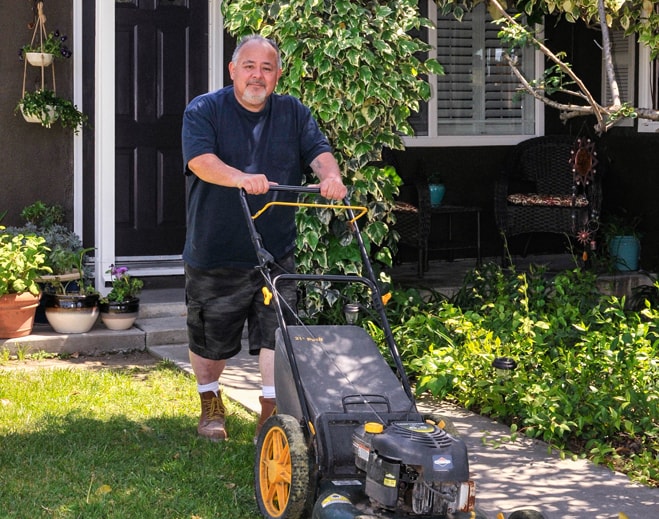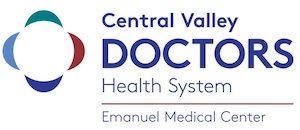Robotic-Assisted Technology Helps Accident Victim Get Back to Activities He Loves
Apr 27, 2018
Marcus Zuniga prefers to be outdoors.
A superintendent for a large commercial construction company, Marcus likes to be out and active, even doing chores like mowing or raking the lawn.
That’s one of the things that made his 2006 motorcycle accident so devastating. Not only did Marcus lose five inches of bone from his tibia – the shinbone – he underwent 36 surgeries between 2006 and 2008 to repair the leg and treat his other injuries. But in 2010 pain returned in his knee and by mid-2017, he couldn’t walk well enough to do his job or mow his lawn or rake the leaves.
The accident and repairs to his tibia threw off the alignment of his leg, leaving Marcus decidedly bow-legged. That exacerbated the wear and tear on his knee, and by last June he was off work because of the pain. Marcus needed a knee replacement but wasn’t a good candidate after so many previous surgeries.
“Three doctors told me they wouldn’t do it,” he said. “Dr. Guererro looked at my X-rays and said he would.”
Orthopedic surgeon Dr. Patrick Guerrero opened Active Orthopedic Medical Group in Turlock in 2009 and performs surgeries at Emanuel Medical Center. He recognized that what Marcus needed – improved alignment of his knee during the joint replacement – was something a new piece of technology at Emanuel was designed specifically to do.
“He needed to achieve good alignment in that knee and had already had 36 surgeries,” Dr. Guerrero said. “We needed to do it once and get it right and be done. Medically, he can’t afford to have any more surgeries.”
The technology Dr. Guerrero used to perform the operation is a robotic-assisted surgical system called Navio. It lets surgeons create a detailed three-dimensional image of the patient’s joint just by touching them with the tip of a probe. After assembling hundreds of data points, the system helps the surgeon visualize the patient’s anatomy, choose the correct size implant, and align it. When the surgeon is happy with the new joint’s strength and flexibility, the system locks in the information and creates a map that helps the surgeon remove the precise amount of bone to position the implant exactly as planned.
“Having Navio was extremely helpful in Marcus’s case because the deformity in his leg would have made using external or internal guides difficult and less precise,” Guerrero explained. “Navio provided a good opportunity to get the alignment right.”
And today it is right.
“They told me I’d be off work for six months, and I went back after three,” Marcus said. “Everybody asked ‘What are you doing here?’ and I’d just tell them ‘I’m done. My knee is fine.’ I’m so happy to be back at work. It’s incredible. I can walk around, do my job, and the pain in my knee is gone. It feels so much better.”
Marcus couldn’t be more pleased – with the Navio system, with Dr. Guerrero, and with the nurses who cared for him at Emanuel.
“No one has ever treated me better than those nurses,” he said. “And after 36 surgeries, I have some experience. And no one ever cared for me better. I felt like I was the only one in the hospital.”

